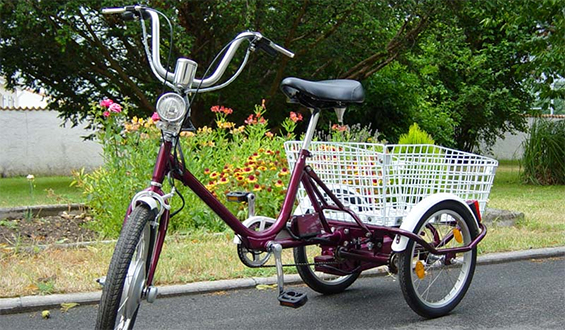
Everyone knows that children are prone to accidents. Childhood is the time to experiment, discover, explore, and have fun. CNN reports that a recent study shows that there were 9,430 cases of tricycle-associated accidents reported to emergency rooms between 2012 and 2013, including many cases of head trauma.
The study, which took place at Medical College of Georgia and Emory University and was published in the journal Pediatrics, was co-authored by medical student Sean Bandzar, who says it is important to have children stay away from streets and water when riding their trikes. When Bandzar began noticing lacerations on the faces of his trike-riding patients, he wanted more information on the topic, but what he found was outdated.
Researchers gathered information from 100 emergency rooms through the National Electronic Injury Surveillance System and found that the most common injury from tricycle injuries were face cuts, and the most often seen broken bone was the elbow. It was also discovered that boys have a higher probability to be seen in the ER and two-year-olds have the highest number of trike accidents reported.
Of the 9,000 children reported to have had tricycle accidents, only 224 were actually admitted to the hospital. Deaths from these types of accidents were statistically insignificant, but did occur rarely, according to earlier studies. But Dr. Gary Smith, President of the Child Injury Prevention Alliance, says children are resilient and they learn by pushing the limits, falling down, and getting up again.
He adds that parents need to keep their kids active and challenged, but no one wants to see traumatic brain injury. Kids riding any kind of bicycle need not only helmets, but also elbow and knee pads. Parental guidance and observation is also critical.
Of the few children who did have to be hospitalized, the injuries included limb amputations, fractures, and internal organ damage.
One daycare operator was surprised by the findings.
“We’ve never actually thought about or given it any thought about safety on a three wheel vehicle,” Margaret Lachowsky Director of the Mater Dei Child Care Center in Topeka said. Despite the recent findings, “We have not had any safety issues with trikes.”
Bandzar suggested that tricycle manufacturers might think about adding brakes to the many tricycles that do not have them. Others, however, disagree.
“Having them learn to brake, in addition to everything else, might be just one [more]thing that they really don’t need [attend]to at that time,” Lachowsky said.
As of now, in order to stop their trike, children need to use their feet. The American Academy of Pediatrics says that most kids do not have the balance or coordination to do that until around age 3. The best trikes, they say, are the ones that have big wheels and are close to the ground — and again, helmets are imperative.
Dr. Smith says his organization has done crash tests with trikes showing that concrete is unforgiving and even a short fall can cause injury. He says that although trike accidents are often not serious, no parent wants to take a chance with his or her child, writes Jen Christensen of CNN. An earlier study found that most accidents were linked to turning the handlebars too fast and making the trike tip over.
Reuters reports that David Schwebel, a researcher at the University of Alabama at Birmingham, affirmed the value of tricycle play:
“Tricycles are valuable tools to help children develop critical gross motor skills like balance, coordination and strength,” Schwebel said. “Any tricycle, when used carefully in a supervised situation, is likely to be a positive activity for children.”




